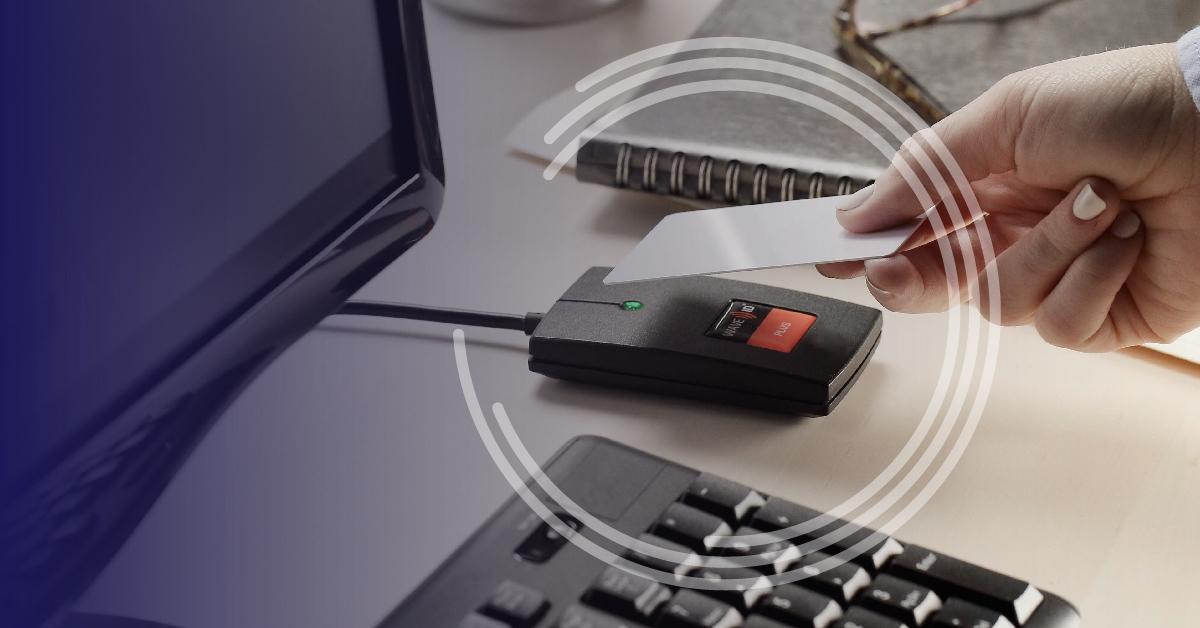RFID Card Solutions: Here Today, Here Tomorrow

Hola mundo alerta alerta
Radio frequency identification (RFID) technology, has a history dating back to World War II. In the 1970s, commercial RFID keycards were first deployed as a simple, secure means of unlocking doors without relying upon a mechanical key. Fast forward to the 21st century and you’ll still find RFID cards (also called tags, badges or smartcards) in use worldwide for both physical and logical access, in industries ranging from healthcare and manufacturing to commercial enterprise and government.
According to The Business Research Company, the global RFID card market is expected to grow from $9.43 billion in 2021 to $10.31 billion in 2022.
Yet as innovative solutions emerge for secure authentication, why do the ubiquitous keycard and RFID card reader continue to play such a vital role in logical access control? Here are a few reasons.
Cost savings
Because RFID technology has been widely available for so many years, the price point today makes RFID card readers quite attractive to many IT and security decision makers. Unlike today’s PKI and FIDO technologies which offer a high level of authentication but can come with a more expensive price point, many tried-and-true RFID reader technologies can still be purchased for well under $500. As for RFID cards, Prox card versions can be procured for under $0.20 per card, and even secure cards cost under $5.00 per card.
For organizations with a large employee base, the tradeoff in security of newer credentials versus the bottom-line costs of basic RFID reader technologies means these mainstays remain attractive.
Established infrastructure
Some organizations seek authentication technology that just works. These businesses typically have an RFID-based access control infrastructure already in place. Their employees have been issued badges, a user database currently exists, and card readers are often in place.
Maintaining basic RFID card technology while upgrading card readers that may be obsolete or damaged makes sense for these organizations if the security level provided by the existing infrastructure remains sufficient. Both end users (the card holders) and the IT team charged with managing this RFID-based environment can simply rest on a proven solution. Simple reader upgrades can be accomplished with a minimal investment in installation time and hardware.
Simple operation
RFID cards and RFID credential readers have been commonplace for a long time. So, there’s no learning curve for employees. Virtually everyone knows how to tap a card to a reader, whether it’s attached to a computer, embedded into a portable or mobile device, or mounted on a wall
There is no training necessary. Conversely, newer modes of multi-factor authentication typically require some investment of time to get everyone comfortable and productive (for example, using a biometric reader or forgoing passwords and PINs on a mobile device). Meanwhile, a traditional card-based RFID reader system is as easy to use as a photocopier or coffee maker.
Key advantages
While multi-factor, contactless authentication is the future of logical access control, conventional RFID cards continue to thrive.
New MFA security protocols may require employees to use their own mobile phone—downloading and learning new applications, entering additional factors of authentication, and more. In addition, new biometric technologies that scan irises or utilize fingerprint identification may also seem intimidating to some employees who also may have privacy concerns. (It is important to note that rf IDEAS® readers never store any biometric data.)
It’s clear that while the advantages of MFA security to prevent costly data breaches are critical to many organizations—specifically to businesses doing work for the U.S. government. For these organizations, RFID cards and readers deliver a key element of the MFA solution, providing the possession factor of “something you own.”
Of course, some businesses do not yet require this level of protection, and instead prefer to focus on efficiency and worker productivity.
For these businesses, basic RFID solutions for single sign-on, time and attendance, secure print management, and other applications are practical, cost-effective, and technologically sufficient.
In some manufacturing and industrial environments, simple RFID card readers are essential. For example, in some highly automated warehouses the use of mobile phones is prohibited on-site, making mobile authentication impossible.
The next step
For organizations who must meet strict regulations—in healthcare or government, for example—yet continue to rely on traditional RFID technology, rf IDEAS® can streamline the process of moving from these lower security cards to new, higher security solutions.
Our expert teams work with clients moving from single- or dual-frequency readers to FIDO security keys, HID Seos™ technology, or MIFARE® contactless cards, among others. See our full list here.
For more information on the RFID solutions that are right for your unique security requirements, reach out to an rf IDEAS representative here.